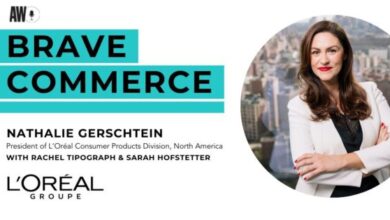
These two things often lead to proving that the product works in the eyes of Gen Z. Because that viral video has generated thousands and sometimes millions of customer-experience stories, that validates the product’s credibility and increases trust and potential to purchase.
Brand values matter as much as the product
When building loyalty, practice your brand’s purpose consistently. Be more than your products. Advertise who you are just as much as what you sell. The brand’s character is more than the logo, color scheme or catchy slogan.
Culture is the most relevant topic on Gen Z’s mind, so if you’re trying to get our attention, being present in culture is a great way to start. Some brands strategize staying relevant by following social trends, but there is an opportunity for brands to do more and be more in culture.
In 1995, Nike created the “If You Let Me Play” ad as a part of the “Just Do It” campaign targeting sexism in sports. In the ad, Nike addressed the benefits of women being accepted in organized sports in a culture where organizations thought otherwise. In this example, Nike leaned more into its brand purpose to address a major issue of the late ’90s. The “Just Do It” campaign became one of its most memorable to date.
How does a brand reflect its values in the marketing space? By marketing them. Brands can become more visible to Gen Z if they spend more time in culture expressing their values. Culture is a great way a brand can gain social capital that it can use to become a leader.
Great creative is remembered
Creativity is key. Most brands don’t have a memorable creative style. Gen Z wants to experience brands through campaigns. This can be captured in a specific videographic style that is consistently used, such as all ads in a campaign having a futuristic setting. These are exciting ideas that Gen Z would remember and look forward to.
When people encounter your brand, it should not feel the same compared to competitors. Apple and Samsung both make smartphones, but their creative marketing approach couldn’t be more different. Brands can operate more as architects, building brand experiences that are unique and differentiating for Gen Z through advertising.





